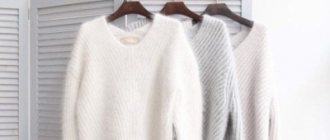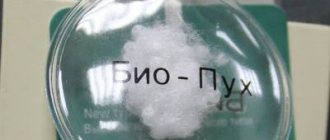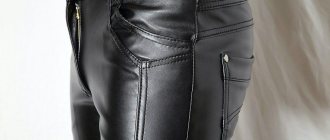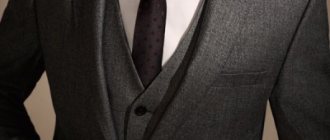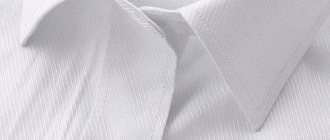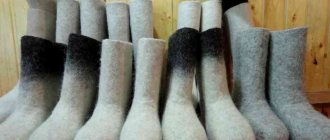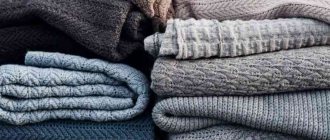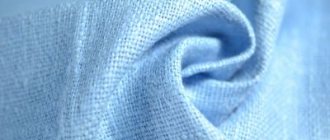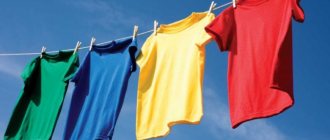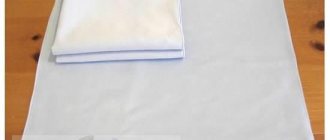The skin of infants is very vulnerable to external factors and therefore requires more careful care. An incorrectly chosen detergent for washing children's clothes often causes the development of redness, peeling, and rashes accompanied by itching. Moreover, the powders contain aggressive volatile particles that easily enter the respiratory tract. Therefore, in order to avoid harmful effects from them, you should carefully choose them and follow several important rules. Let's look further at how to wash a small child's clothes.
Features of washing clothes
You can wash babies' clothes by hand or in a machine. Manual processing allows you to cope with the task optimally, but requires a lot of time and effort. Washing by hand can be done not only with modern detergents, but also with regular baby soap.
This method has many advantages:
- minimum chemistry;
- no odor;
- maintaining the softness of the material;
- inclusion of natural ingredients;
- hypoallergenic;
- availability;
- delicate attitude towards fabric.
You can treat a newborn's things using soap shavings, and wash away dirt with bar soap. But this option is not suitable for a washing machine, and requires the use of children's laundry detergents suitable for automatic washing.
If you choose which wash is the most hygienic, then machine washing is inferior in this matter to manual processing. For hand washing a newborn's clothes, it is recommended to allocate a separate basin.
After washing, you must rinse the household chemicals out of the item very thoroughly. Gels are the easiest to rinse, powders are worse, soap is even worse.
You can find general rules for washing children's clothes here.
Why can't you wash with regular powder?
Regular laundry detergent contains fragrances, chemical neutralizers, biosystems, and color stabilizers. All these substances can provoke an allergic reaction in a child.
On a note. When choosing a product, parents try different brands, using them all in a short period of time. If the baby has an allergy, it is not so easy to find out which powder caused it. In this case, it is recommended to switch to hand washing until the allergy goes away. Then you can start selecting the powder again, trying each product one at a time.
As for soap, it is better to wash a newborn’s clothes with baby soap or regular laundry soap. The latter is made from animal fats with the addition of alkali. There are no flavors or other additives in this product. However, the disadvantage of this product is the fact that it is not suitable for a washing machine due to intense foaming.
The better: top 3 household products
A wide range of washing gels and powders allows you to find among all the variety ones aimed directly at children's underwear. They must have an appropriate indication on the packaging about this.
One of the main requirements is that the selected powder must be phosphate-free.
Video review of baby laundry detergents:
"Eared Nanny"
TM Ushasty Nyan presents a large list of products suitable for washing clothes for children and newborns. The cost of packaging 4.5 kg of powder reaches 1,000 rubles. Gel 1.2 l. – costs about 500 rubles, bar soap – from 35 rubles for 1 piece.
Domal "Baby"
Gel TM Domal is produced in Germany. It is intended for washing clothes of newborns from birth, it is hypoallergenic. The product has passed all necessary inspections and tests confirming the safety of the product. A 750 ml package costs about 500 rubles .
"The world of childhood"
This is natural soap powder produced in the Russian Federation.
It is designed for washing clothes of a newborn baby. This is a hypoallergenic product with disinfectant and antibacterial properties. The powder form is based on natural soap shavings . A gel is also available, the cost of the bottle is 0.75 liters. - about 200 rubles.
Overview of laundry products
Popular means for processing children's things are:
- Meine Liebe. Allows you to remove stubborn stains, is economical to use, does not contain phosphates, and is easily washed out of fabric fibers. The use of this powder is approved by dermatologists.
- Eared nanny. An effective product, hypoallergenic, odorless, and easy to rinse. The disadvantage is the presence of phosphates in the composition.
- Frosh. Does not contain dyes, phosphates, effectively removes severe stains. The product is hypoallergenic and washes out well. The disadvantage is the high cost.
- Stork. Does not emit strong odors, does not contain phosphates, contains aloe extract, and effectively removes stains. The downside is that you can’t wash silk and wool.
- Tide. It contains no phosphates, contains chamomile extract, and removes stains well. Disadvantage: pungent odor. In addition, the product may cause allergies.
As for soap and other hand washing products, there are several options:
- "Umka." Hypoallergenic, odorless product at an affordable price.
- "My baby". The disadvantages are a strong odor, poor foaming, and the inability to remove heavy dirt.
- "Eared nanny." A completely safe product that effectively removes even stubborn stains. Has a whitening effect and a pleasant smell.
- Duru. Economical to use, affordable price, beautiful design, hypoallergenic, low odor. Capable of whitening things, forms a large amount of foam.
- "Friend". A very effective product, inexpensive, with a pleasant smell. Completely hypoallergenic, foams well. It is used uneconomically and is rarely found on sale.
Washing powder popular with moms
In an automatic washing machine: on what mode, at what temperature?
Automatic washing should be carried out on the “Baby Clothes” or “Children’s Clothes” mode. In this case, the temperature is set to the maximum, up to +90ºС, and the rinsing is more thorough than with other modes.
If there is no special mode for children's clothes on the washing machine, you need to focus on the type of material and set the temperature to high. For diapers it is 80-90ºС.
It is also necessary to set up an additional rinse. If the fabric is thin and light, the temperature can be set lower, but not less than +40ºС.
Work order:
- If there are difficult stains on your clothes, it is better to wash them in advance.
Fasten, if any, buttons on clothes.- Place items in the washing machine drum. It is advisable that the load is not full - this will allow you to better wash all the products.
- Pour powder or gel into the detergent container.
- Select a mode designed for washing children's clothes. If it is not there, make settings according to the type of fabric.
- Adjust the water heating temperature.
- Set additional rinse.
- Start the washing process.
After the end of the washing cycle, items are hung out to dry without leaving them in the washing machine for a long time.
When can you start using regular powder?
It is advisable to wash all of your baby’s clothes with a special baby detergent for at least 6 months. If the child has not experienced skin reactions during this period, you can gradually switch to regular powder containing bioregulators, activators and neutralizers for hard water.
To check your baby’s skin reaction to a new product, soak one baby item in the “adult” powder, rinse thoroughly and dry. If the baby has no visible reactions while wearing these clothes, then the powder is suitable.
Manually
Hand washing should be done at a sufficiently high temperature. You can use hot water at a tolerable temperature or wear two gloves on both hands - cotton and rubber.
Procedure:
- Washing powder or grated baby soap is diluted in prepared water.
- Dip children's clothes into soapy water.
- If there are stained areas on things, they should be treated separately (soap and rub).
- For better washing, it is advisable to soak things for at least 15 minutes.
- Rub your hands after soaking, paying attention to areas with stains.
- Drain the soapy water.
- Rinse things, changing the water at least 3 times.
You should rinse things not in hot, but in warm water. The last rinse is cold.
Which powder is suitable?
Do not use the same one that you use for your own T-shirts and jeans under any circumstances! He's no good! You should approach the choice quite responsibly:
- pay attention to the labels on the packages “hypoallergenic” and “for newborns”, this is one of the key points;
- make such purchases only in large stores or even in pharmacies, this will protect you from purchasing a counterfeit;
- Be sure to read the ingredients and do not try to completely trust the advertising! If the packaging indicates conditioners, fragrances, phosphates and more than 35 percent surfactants, then under no circumstances do we take such a product!
In front of the maternity hospital
When preparing things for the baby before the maternity hospital, you should inspect and wash them. This is necessary both for new things and for those passed down from older children. You can wash the first items by hand or use a machine for this.
To do this, you must comply with all requirements for the care of children's clothing, including:
- washing using products approved for newborns;
- thorough rinsing;
- ironing on both sides;
- storage after processing in a closed cellophane bag.
It is important to choose things made from natural materials, even if they are inferior in beauty to their synthetic counterparts. For the health of the newborn, all products must be made from hypoallergenic materials.
And one last thing. Laundry things right away
For me it looked like this: take dirty diapers, bibs, rompers, baby vests and use a brush to brush away feces, lumps of dirt, a stuck cookie, a piece of LEGO into the trash. We rinse the remaining dirt under a strong stream of water and wash it with ordinary laundry soap.
It's good if you learn to do this with gloves. Your hands will thank you later.
Place it in a bowl with a washing solution (we separate baby clothes, remember?). In the evening, everything is thrown into the washing machine on a normal cycle. Then we add a second rinse, and we have time to put the baby to bed. And when he wakes up at night, after feeding, you can get up and hang up the diapers. The main thing is to do it carefully so that it looks like it has been ironed. And don't fall asleep halfway through.
And remember, the baby doesn’t care how perfectly clean his clothes are or how stained his older brother is. The main thing is how happy and rested his mother is.
Do new clothes need treatment before wearing them for the first time?
New clothes for a newborn must be washed. Labels, tags and stickers are first removed from them.
Before getting into the hands of a young mother, diapers and baby vests go a long way:
- they manage to be in the hands of those who make fabric and sew clothes, sellers, warehouse workers, and other buyers;
- products may retain traces of dyes;
- many fabrics are treated against caking and mold with chemicals, starch, etc.
To protect the baby, things must be washed and ironed according to all rules. Just as with standard washing of newborn clothes, it is necessary to set an additional rinse.
Do I need to wash new clothes?
Doctors say that recently purchased items should be washed before wearing. The fact is that the protective functions of the child’s body are not sufficiently developed, so it is necessary to protect the baby from contact with pathogenic microorganisms that may be on the surface of purchased products. In addition, it is unknown in what conditions the clothes or linen were stored. It is likely that there are infections in the warehouse, the carriers of which are often rodents. It is also obvious that the things were touched with dirty hands (it is unlikely that they were washed with soap beforehand).
At what age can you give your baby mashed potatoes?
When answering the question of whether it is necessary to wash new things, the following factors should be taken into account:
- Before purchase, products pass through the hands of cutters, seamstresses, sellers, and other people. For a certain period of time, things are stored in a warehouse, where there could be infections.
- Often the material is starched to give it a better look. In this case, the fabric becomes rigid and can therefore irritate the baby’s skin.
- The dye present in the fibers of the product also causes irritation and can cause allergies.
On a note. After washing, it is recommended to iron the items and steam them on both sides. These measures will completely destroy pathogenic bacteria and fungi.
How often?
Baby's clothes need careful and frequent washing . It is necessary to replace things as they become dirty, even if it is, for example, a small stain after regurgitation.
Another rule in caring for newborns is changing clothes after bathing. This must be done even when the previous set appears clean.
No matter how many things a young mother has in her arsenal, children’s dirty laundry should not be accumulated, as it becomes a breeding ground for the development of bacteria.
It is advisable to do laundry daily . Bed linen should be replaced every 2 days or more often if it becomes dirty of any kind. Clothes - at least once a day.
Can I use bleach?
Apgar scale for newborns - scores at birth, table
Children's clothes can be bleached, but several important points should be taken into account:
- the product should not contain chlorine or other aggressive substances;
- processed products must be rinsed thoroughly.
However, it is not recommended to resort to bleaching for the following reasons:
- Even if a safe composition is chosen, it is unknown what effect it will have on the baby's skin.
- It is quite difficult to remove all bleach particles from fabric fibers (even with careful and repeated rinsing).
Bleach "Umka"
Diapers
Diapers are the baby's first clothing. Proper organization of their washing will maintain hygiene and save mom’s time.
When choosing how best to cope with a task, using a machine or with your hands, you need to consider the following points:
- Automatic washing saves time;
- things come out of the machine almost dry, since the spin cycle is much better than when washing by hand;
- manual processing allows you to use any detergent for washing children's things, and only special preparations can be used in the machine.
The frequency of washing diapers, as well as their quantity, depend on whether disposable diapers are used when caring for the baby. If they are used almost constantly, then the frequency of washing diapers is reduced significantly.
In an automatic machine, it is advisable to carry out high-quality washing at a temperature of at least +60ºС on the main “Children's clothing” mode. As an option, wash using the “manual” mode or taking into account the type of material.
Procedure for hand washing diapers:
Rinse the diapers under running water to remove any major dirt and rinse out any urine.- Prepare a solution based on hot water and soap shavings or powder.
- Soak things.
- Leave them for a quarter of an hour.
- Rub and mash.
- Rinse with multiple water changes.
Since diapers are wearable clothing, it is necessary for a newborn to iron them. The most important thing is to treat the inside, which is in direct contact with the baby’s skin.
General rules for washing children's clothing
In order not to spoil the product and remove stains, follow generally accepted recommendations and follow a certain sequence of actions.
Preparing for washing
Before washing baby clothes, do a few preparatory steps:
- Always separate children's products from adult products. Get a special basket for dirty children's laundry, so you won't have any difficulties sorting clothes.
- Wash in several passes. In one wash - white items, in the second - colored ones.
- For heavy dirt and stains, pre-wash or scrub with a brush.
- Be sure to read the tag on the product. This is where information will be provided on what mode and temperature to wash the item.
- Before putting your clothes in the washing machine, make sure there are no food or feces on them.
- Always rinse your laundry thoroughly.
- Choose a detergent according to the age of the child. A high-quality powder does not contain chlorine and phosphates, and its packaging should be marked “0+” or “for children.”
Follow one of the main rules - get rid of local contamination immediately after it appears.
Subtleties of machine wash
If you prefer to wash children's clothes in an automatic washing machine, follow these recommendations:
- Try not to machine wash heavily soiled items such as work clothes, rugs and shoes for several months after your baby is born.
- Use a mode specifically designed for baby laundry. Do not fill the drum completely with things, it is better to load 2/3 of the volume, so the soapy water will circulate freely.
- Use the extra rinse option to completely rinse the soap out of the fabric.
- Make sure that soiled children's clothing does not sit for a long time, otherwise heavy stains will be more difficult to wash off, and the items can become a breeding ground for bacteria.
- Do not use any other products other than special baby powder or gel.
The best option for drying products is open air. If you do not have the opportunity to hang your laundry outside, dry your clothes in your apartment on a dryer near a heat source.
Features of hand washing
Unlike machine washing, hand washing will be less effective. There are several reasons for this:
- inability to wash things in very hot water (high temperatures will be uncomfortable for your hands);
- To remove complex contaminants and perform a high-quality spin, you will need to make every effort;
- The washing process takes a long time.
If you still do not have the opportunity to use an automatic washing machine, wash by hand, following all the washing steps:
- Dilute baby powder, gel or soap in hot water. To make the soap dissolve easier, grate the piece first.
- In heavily soiled areas, apply a mixture of water and powder or soap foam.
- Depending on the degree of contamination, soak the laundry in a basin for a certain time (up to 2 hours).
- Rub the item thoroughly with your hands, paying particular attention to stubborn stains.
- Rinse the product in 3-5 waters, lowering the temperature each time.
To keep the water as hot as possible and your hands comfortable, wear rubber and cotton gloves together.
Which temperature mode to choose
The item's label most likely indicates at what temperature the item can be washed.
If you do not have such information, please note that:
- soft fabric products can be washed at a temperature not exceeding 40 degrees;
- children's clothing made of cotton material can be washed at 60 degrees;
- It is advisable to wash bed linen, diapers and items made from natural fabrics in hot water at about 90 degrees;
- If your child's clothes just need to be freshened up, wash them on a delicate cycle.
Washing machines most often have a “baby wash” mode, with which you can wash things at the right temperature while maintaining their softness and quality. If there is no function, select the mode according to the type of fabric.
Removing difficult stains
Stains on babies' clothes can be washed only with products that are harmless to the newborn. Products containing chlorine and substances that create a visual effect of whiteness are prohibited .
Such products can remain on the surface of fabrics and create problems, impeding the breathability of materials and causing allergies.
Hydrogen peroxide has proven itself as a stain remover from children's clothing due to the following qualities:
- disinfection of matter from microbes;
- removal of a large list of contaminants;
- good rinsing from the material;
- safe for children's skin.
Contamination of newborn clothes is predominantly biological in origin. Therefore, it is quite possible to wash them without complex stain removers, which are also not safe for the baby.
If you don't let the stains dry, it will be much easier to deal with them even with simple soap.
Feces
Washing diapers and onesies from feces must be done after the items have been washed under cold water.
After this, you can prepare a solution for soaking:
- For 3 l. hot water you need 2 tbsp. l. soda
- The solution is stirred.
- Soak clothes for 1-1.5 hours.
- Rinse.
- Wash in the usual way.
Additionally, it is possible to sprinkle the stained area with baking soda and moisten it with vinegar. The chemical reaction of these components will allow for better removal of stains.
Another way is to soap the stain with baby soap and then soak it in hot water for a couple of hours. Finish by machine washing at high temperature.
Urine
Urine stains on diapers can be removed using baking soda, ammonia or vinegar.
Procedure:
- The spots are treated with one of the preparations. If you choose soda, you must first moisten the dry cloth.
- Set aside for 15-30 minutes.
- Wash as usual.
Fresh lemon juice can also serve as a natural bleach. Products treated with it, as in other cases, need to be washed and thoroughly rinsed.
Spit marks
Fresh marks from regurgitation can be washed away well with baby soap. If the stains have become old, they can be treated with a soda solution.
Milk
Milk stains can be difficult to remove without first soaking . It is advisable not to let them dry out and be absorbed deep into the fibers.
The stain remover from the “Eared Nanny” series will help you deal with stains from breast milk or baby formula. Thorough soaping with Stork soap will also help.
Baby cream
Greasy stains from the cream that was used to lubricate the folds for diaper rash can also leave marks on the baby’s underwear. They can be removed with baking soda or baby powder.
Procedure:
- place a clean towel under the stained area;
- Sprinkle the stain with baby powder or baking soda;
- place a sheet of white writing paper on top;
- turned inside out;
- iron the area with the stain - the heat will stimulate the absorption of fat into the bulk product.
With old greasy marks, this method may not be effective.
Reviews from experienced mothers
I bought the first baby powder I came across - Eared Nannies. Everything is ok, no reactions. Children are completely viable creatures. If there are no allergies in the family and the child has no reactions, then why create problems where there are none.
Guest
https://www.woman.ru/kids/baby/thread/4739252/
For now, the newborn is just a household. soap and ironed everything. I started washing with powder after a year and then I chose one without phosphate.
minskaya.djulia
https://www.woman.ru/kids/baby/thread/4739252/
It's simple: buy any baby soap, preferably from Neva cosmetics, and give your husband the task of rubbing it on a grater. All. Pour this crumb into the powder compartment and wash it for your health. What kind of hands are there to wash, or do anything else? Three months on the crumbs, then switch to “Stork”. My son will soon be seven, the washing machine is the same, so nothing will happen to it if such a question arises in your mind.
Guest
https://www.woman.ru/kids/baby/thread/4739252/
Washing machine with any baby powder. The first time, an additional rinse. Well, separately, of course, from other things. I stroked it until the umbilical wound healed, then it didn’t.
mari
https://forum.littleone.ru/showthread.php?t=7347780
Everyone praises Eared Nanny, but we have an allergy to him, our daughter is covered in a rash. So now with pens and soap. Sometimes I squeezed a large volume in the machine.
Olya Bannikova
https://deti.mail.ru/forum/nashi_deti/ot_rozhdenija_do_goda/a_kak_vy_stirali_ili_stiraete_veshhi_novorozhdennogo/?page=2
And from my own experience I will say this: for the first six months it’s good to use soap powder - it’s healthier (Our mother or the Israeli Baby line - but it has a stronger smell) + rinse aid 1/2 of the recommended dose (Our mother again). You need to iron a new thing for a baby on both sides (if you’re too lazy, only on the inside), after wearing it, you can quickly iron it on the outside - just so that it becomes soft and pleasant to the body. From 6 months you can switch to chemical powders (Eared Nanny or others). I’ve never washed it by hand beforehand - the machine picks up all the stains, the only thing is don’t store it for a long time - straight into the wash. I set it to 40 degrees for cotton with additional rinsing. Even though we are allergic, we have never had a reaction to powders like this.
Lelya
https://www.babyblog.ru/questions/archive/20509
Proper drying
After washing, the baby’s clothes are wrung out and placed in one pile. The best place to dry children's things is outdoors . This is especially important when items are not wrung out well enough after hand washing. After the machine, the products are removed from the drum almost dry.
Be sure to dry the newborn's bedding and belongings indoors in a dry place, creating all the conditions for quick drying.
If drying is carried out in a damp place, then the clothes will not only remain damp for a long time, but can also become a breeding ground for mold and other pathogens.
Adviсe:
If your washing machine has a drying function, you can use it.- Drying clothes outside is preferable to drying them in an apartment. But for polluted areas of the city, it would be better to organize drying in an apartment.
- Heaters and other heating devices will help dry things faster by providing heat sources.
In this case, it is necessary to adhere to fire and electrical safety rules, placing children's clothing not on the devices themselves.
Only completely dry items can be sent for storage.
Ironing
After washing, it is important to dry your clothes. This is best done either on a glassed-in balcony or in the bathroom. If the balcony is not closed, then street dirt may get on things. Hanging wet items at home is also contraindicated. This increases humidity and increases the risk of mold.
Clean clothes and diapers must be ironed. It is no secret that ironing not only gives the product an attractive appearance, but also disinfects it. This is important, because a newborn should not encounter germs at all in the first month of his life. This is explained by the fact that untreated clothing can cause infection through a navel that has not yet healed.
Important! To make your baby's clothes fuller and softer, just iron them on both sides in the steam mode.
When the child grows up, you can iron it on one side. Unfortunately, little attention is paid to this point by parents, and some consider ironing to be an unnecessary activity, because you can simply fold things neatly, thereby preventing them from creasing.
How to iron?
It is necessary to iron the clothes of a newborn in the first month of life on both sides. Use a hot iron for this.
Steam treatment during ironing serves for additional disinfection . After processing, all ironed clothing is placed in a plastic bag or fabric cover.
Only in the first month of a newborn’s life, all of his underwear must be ironed on both sides. Then you can move on to simpler processing - from the inside of things.
What to do if stains won't come off?
The main method of combating such severe pollution is speed. If you manage to remove the stain without delay, the results will most likely be excellent.
In other cases, you will have to try using different means, including folk ones:
- Milk stains should be washed in cool water with soap and a few drops of ammonia;
- Wipe the fruit juice stain with a cotton swab dipped in a mixture of ammonia and water, and wash after a while;
- Fruit stain - mix vodka with glycerin (1:1) and wipe the stain;
- A fresh grease stain can be removed using warm bread crumbs or soap solution;
- Blood stains can be removed with cold water and baby soap;
- A tea stain can be removed by wiping it with a cotton swab dipped in a mixture of ammonia (half a teaspoon) and glycerin (2 teaspoons).
Do we wash by machine or by hand?
Another question that causes quite heated discussions is how best to wash children's clothes - manually or in an automatic machine. Let's consider each option separately.
Of course, hand washing has the advantage of being more hygienic. A separate basin is used for hand washing children's underwear, which means that the newborn's things do not come into contact with adult clothing.
But that’s probably where the advantages end. They are being replaced by a number of disadvantages that should be taken into account when choosing a washing option.
- When washing by hand, it is impossible to rinse things as well as when washing by machine. This means that in order to remove cleaning products from the fabric, you will have to rinse more times.
- Spin. Competing with a washing machine in this matter is also not easy. If things are washed in the summer, minutes may seem insignificant, because in the sun everything dries in a matter of hours. But what about in the cold season, when the sun does not pamper us with its presence and the laundry dries in the room for a day, or even two?
- Hand washing is possible only at a temperature of 30-40 degrees, no more. Otherwise, you risk damaging the skin of your hands (even when using gloves). For half of the stains, water at this temperature will be useless and it will not be possible to remove the stains. This means you will need boiling.
Needless to say, pediatricians prefer hand washing using baby soap. Of course, it’s always much easier said than done. But what about a young mother who doesn’t have an extra hour, not only for laundry, but even for sleep?
The answer is obvious: use the washing machine, following our recommendations.
The spots are coming. And they retreat
When the first complementary foods appear, new worries are added. And if store-bought jars of homogenized puree for babies eliminate the problem of preparing special foods, the mother will have to deal with the stains alone. And there will be spots every day. How to get rid of it?
The main commandment is no chlorine! Any chlorine-based bleach causes allergies in a delicate newborn baby, and this special aroma of bleach is practically indestructible. Also prohibited are any products containing soda and fluorescent substances. They are designed to remain on the surface of the fabric, giving the appearance of whiteness.
The best remedy is hydrogen peroxide. It has a number of advantages:
- safe for the skin of newborns;
- easy to rinse out of fabric;
- removes almost any stain, no matter what its origin, especially if it is not old;
- simultaneously disinfects the fabric from microbes.
At high temperatures, almost all stains also come off. But it is not necessary to boil the laundry, especially since this will turn it grey. A temperature of 60 degrees is already enough.
No matter what ratings you are guided by, the baby will definitely make his own adjustments. Only his sensitive skin is able to choose the right approach to his clothes. Therefore, proceed from the safest means, and from them choose the most suitable one.
Hand washing clothes for newborns
No matter how convenient the machine is, it is not advisable to run it for one or two small things. It's much easier and faster to do it manually.
- You need to fill the basin with hot water. Dissolve special washing powder or baby soap shavings in water.
- Separately (under running water) wash children's clothes to remove dirt (food debris, vomit, feces). Rub the dirtiest places with baby soap.
- Next, you should immerse the laundry in a basin and leave to dry for 15-20 minutes.
- After this, wash the linen by hand. Contaminated areas need to be treated especially intensively.
- Children's clothes should be rinsed 3-4 times in clean water.
Famous brands of baby powders and their features
It is very difficult for young mothers to understand the abundance of offers that are now on the market. We offer you a brief description of the properties and compositions of the most popular children's powders:
- Tide for children
is a powder with chamomile extract, which significantly reduces the level of influence of synthetic components on the sensitive skin of children. Suitable for washing all materials except wool and silk; - Eared nanny
- copes well with difficult stains, even in cold water. Recommended for washing clothes and clothes of newborns. However, there are known cases of allergic reactions to this powder in children under 1 year of age; - Karapuz
- the main component of the powder - baby soap, suitable for washing baby diapers from the first month of life. Gives good results in both hot and cold water; - Amway
- the powder contains only hypoallergenic and natural ingredients, has a high washing quality, and is completely and easily removed from the fabric when rinsed; - Myth
- it is made from fragrance-free baby soap and does not cause irritation. The powder contains substances that clean the washing machine drum from scale; - Stork
- equally suitable for washing by hand and by machine, contains healing aloe vera extract, and softens the skin of children.
Consider these simple conditions for choosing washing products and methods, and your baby’s clothes will be absolutely safe for his health.

